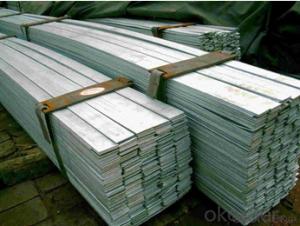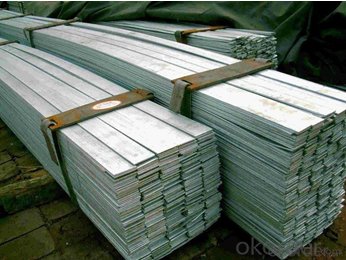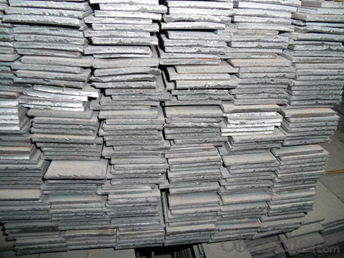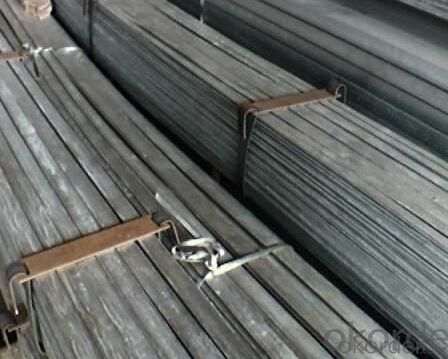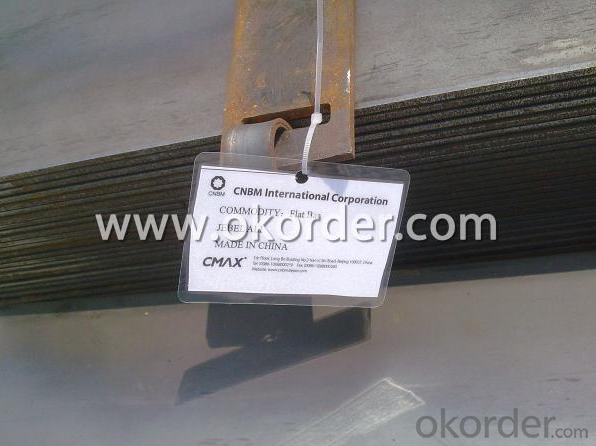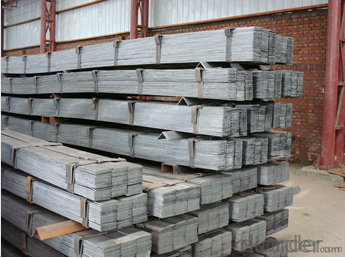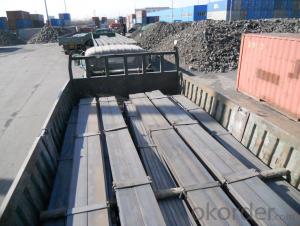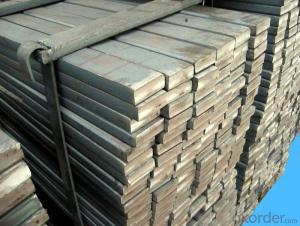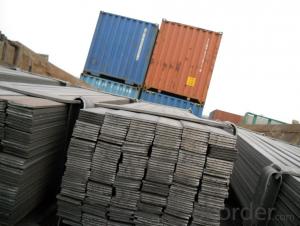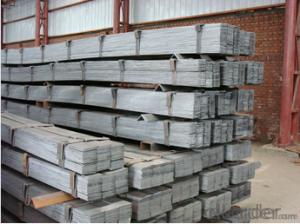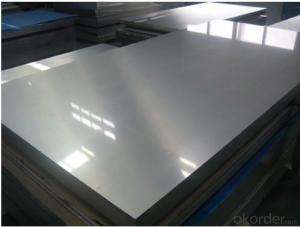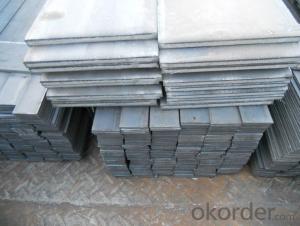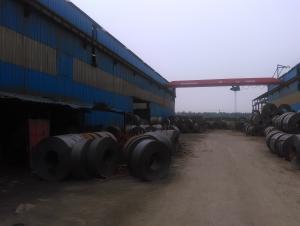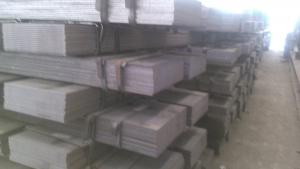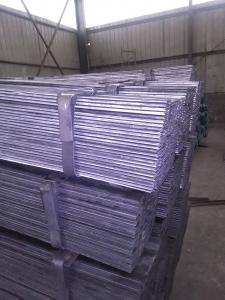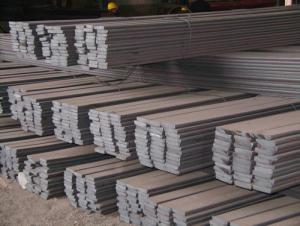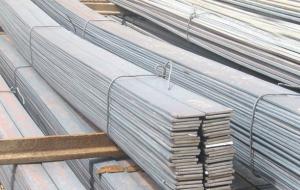Stainless Galvanized Flat Bar of High Quanlity with Leigth 6M/12M
- Loading Port:
- Tianjin
- Payment Terms:
- TT OR LC
- Min Order Qty:
- 50 m.t.
- Supply Capability:
- 1000 m.t./month
OKorder Service Pledge
OKorder Financial Service
You Might Also Like
Product Description:
OKorder is offering Stainless Galvanized Flat Bar of High Quanlity with Leigth 6M/12M at great prices with worldwide shipping. Our supplier is a world-class manufacturer of steel, with our products utilized the world over. OKorder annually supplies products to European, North American and Asian markets. We provide quotations within 24 hours of receiving an inquiry and guarantee competitive prices.
Product Applications:
Stainless Galvanized Flat Bar of High Quanlity with Leigth 6M/12M are ideal for structural applications and are widely used in the construction of buildings and bridges, and the manufacturing, petrochemical, and transportation industries.
Product Advantages:
OKorder's Galvanized Flat Bar of Q235 with Leigth 6M/12M are durable, strong, and resist corrosion.
Main Product Features:
· Premium quality
· Prompt delivery & seaworthy packing (30 days after receiving deposit)
· Corrosion resistance
· Can be recycled and reused
· Mill test certification
· Professional Service
· Competitive pricing
Specifications of Stainless Galvanized Flat Bar of High Quanlity with Leigth 6M/12M
1. Invoicing on theoretical weight or actual weight as customer request
2. Length: 6m, 12m as following table
3. Sizes:
Galvanized Flat Bar Zinc Thickness:15-80μ
Grade: A36, SS400, Q235, Q195
Standard: ASTM, JIS, GB
Thickness:1.5mm-20mm
Width: 10mm-250mm
Width | Thickness | Width | Thickness | Width | Thickness |
(mm) | (mm) | (mm) | (mm) | (mm) | (mm) |
8 | 5-7 | 50 | 5-25 | 200 | 8-40 |
10 | 3-9 | 55 | 5-25 | 220 | 8-40 |
12 | 3-9 | 60 | 5-25 | 250 | 8-40 |
13 | 5-11 | 65 | 5-25 | 260 | 8-40 |
14 | 3-12 | 70 | 5-25 | 270 | 8-40 |
15 | 5-12 | 75 | 5-25 | 280 | 8-40 |
16 | 4-14 | 80 | 6-25 | 290 | 8-40 |
18 | 4-16 | 85 | 6-25 | 300 | 8-40 |
20 | 4-18 | 90 | 6-25 | 310 | 8-40 |
22 | 4-20 | 95 | 6-25 | 320 | 8-40 |
24 | 5-20 | 100 | 6-25 | 330 | 8-40 |
25 | 4-20 | 105 | 6-25 | 340 | 8-40 |
28 | 4-20 | 110 | 6-25 | 350 | 8-40 |
30 | 4-25 | 120 | 7-25 | 360 | 8-40 |
32 | 4-25 | 125 | 7-25 | 370 | 8-40 |
35 | 4-25 | 130 | 8-25 | 380 | 8-40 |
36 | 6-25 | 140 | 8-25 | 390 | 8-40 |
38 | 7-25 | 150 | 8-25 | 400 | 8-40 |
40 | 4-25 | 160 | 8-40 | ||
45 | 4-25 | 180 | 8-40 |
5. Material Specifications:
Production Standard: GB/T 700-2006 | |||||
Grade | Chemical composition (%,max) | ||||
C | Si | Mn | P | S | |
Q195 | 0.12 | 0.30 | 0.50 | 0.035 | 0.040 |
Q235A | 0.22 | 0.35 | 1.40 | 0.045 | 0.050 |
Q235B | 0.20 | 0.35 | 1.40 | 0.045 | 0.045 |
Q235C | 0.17 | 0.35 | 1.40 | 0.040 | 0.040 |
Q235D | 0.17 | 0.35 | 1.40 | 0.035 | 0.035 |
Q235 is similar to ASTMA36,JIS SS400
Usage & Applications of Stainless Galvanized Flat Bar of High Quanlity with Leigth 6M/12M
Widely used for construction,Fabrication , Ship building, Machinery manufacturing, Steel structure
Packaging & Delivery of Galvanized Flat Bar of Q235 with Leigth 6M/12M
1. Packing: it is nude packed in bundles by steel wire rod
2. Bundle weight: not more than 3.5MT for bulk vessel; less than 3 MT for container load
3. Marks:
Color marking: There will be color marking on both end of the bundle for the cargo delivered by bulk vessel. That makes it easily to distinguish at the destination port.
Tag mark: there will be tag mark tied up on the bundles. The information usually including supplier logo and name, product name, made inChina, shipping marks and other information request by the customer.
4. Transportation: the goods are delivered by truck from mill to loading port, the maximum quantity can be loaded is around 40MTs by each truck. If the order quantity cannot reach the full truck loaded, the transportation cost per ton will be little higher than full load.
5. Delivered by container or bulk vessel
Production flow of Stainless Galvanized Flat Bar of High Quanlity with Leigth 6M/12M
The process of hot-dip galvanizing results in a metallurgical bond between zinc and steel with a series of distinct iron-zinc alloys. The resulting coated steel can be used in much the same way as uncoated.
A typical hot-dip galvanizing line operates as follows:
Steel is cleaned using a caustic solution. This removes oil/grease, dirt, and paint.
The caustic cleaning solution is rinsed off.
The steel is pickled in an acidic solution to remove mill scale.
The pickling solution is rinsed off.
A flux, often zinc ammonium chloride is applied to the steel to inhibit oxidation of the cleaned surface upon exposure to air. The flux is allowed to dry on the steel and aids in the process of the liquid zinc wetting and adhering to the steel.
The steel is dipped into the molten zinc bath and held there until the temperature of the steel equilibrates with that of the bath.
The steel is cooled in a quench tank to reduce its temperature and inhibit undesirable reactions of the newly formed coating with the atmosphere.
FAQ:
Q1: Why buy Materials & Equipment from OKorder.com?
A1: All products offered byOKorder.com are carefully selected from China's most reliable manufacturing enterprises. Through its ISO certifications, OKorder.com adheres to the highest standards and a commitment to supply chain safety and customer satisfaction.
Q2: How do we guarantee the quality of our products?
A2: We have established an advanced quality management system which conducts strict quality tests at every step, from raw materials to the final product. At the same time, we provide extensive follow-up service assurances as required.
Q3: How soon can we receive the product after purchase?
A3: Within three days of placing an order, we will begin production. The specific shipping date is dependent upon international and government factors, but is typically 7 to 10 workdays.
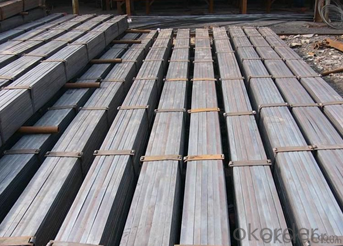
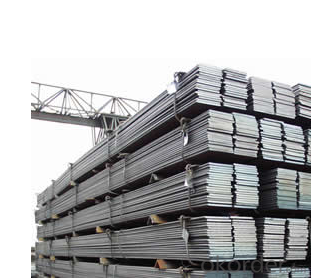
- Q: Are steel flat bars used in the construction of bridges or infrastructure?
- Yes, steel flat bars are commonly used in the construction of bridges and infrastructure. Steel flat bars are versatile and strong, making them suitable for various applications in construction projects. They are often used as structural components in bridge construction, providing support and stability. Steel flat bars can also be used in the construction of infrastructures such as buildings, roads, and railways, where their strength and durability are valued. Additionally, steel flat bars can be easily fabricated and welded, making them a preferred choice in construction projects that require customization and flexibility. Overall, steel flat bars are widely utilized in the construction industry for their reliability, strength, and versatility.
- Q: What are the common forming techniques used for steel flat bars?
- Steel flat bars can be formed using various techniques such as hot rolling, cold rolling, and extrusion. In hot rolling, the steel is heated above its recrystallization temperature and then passed through rollers. This reduces the thickness of the steel and shapes it into a flat bar. This method is popular for creating steel flat bars with precise dimensions and a smooth surface finish. Cold rolling, on the other hand, involves passing the steel through rollers at room temperature. This process is used to further refine the thickness and surface finish of the steel flat bar formed through hot rolling. Additionally, cold rolling can enhance the strength and hardness of the steel. Extrusion is another technique that is employed to form steel flat bars. It involves forcing the steel through a die, resulting in the desired shape of a flat bar. Extrusion is commonly utilized when intricate cross-sectional profiles are required or when high precision is vital for the final product. Additional forming techniques for steel flat bars include bending, shearing, and welding. Bending is useful for achieving specific shapes or angles in the flat bar, while shearing is employed to cut the flat bar to the desired length. Welding, on the other hand, is a joining process used to connect multiple steel flat bars together or to other steel components.
- Q: What is the difference between hot-rolled and cold-rolled steel flat bars?
- The main difference between hot-rolled and cold-rolled steel flat bars lies in their production process and resulting characteristics. Hot-rolled steel flat bars are made by heating a steel billet or slab to a high temperature and then rolling it through a series of rollers to achieve the desired shape and size. This process results in a relatively rough surface and rounded edges. On the other hand, cold-rolled steel flat bars are produced by cooling down the hot-rolled steel to room temperature and then passing it through a series of rollers at room temperature. This process results in a smoother surface finish and sharper edges compared to hot-rolled steel flat bars. In terms of physical properties, hot-rolled steel flat bars generally have a larger size tolerance, as the high-temperature rolling process can cause some dimensional variations. Cold-rolled steel flat bars, on the other hand, have a tighter size tolerance due to the controlled cold-rolling process. Additionally, due to the heating and cooling process involved in their production, hot-rolled steel flat bars typically have a scaled surface, which is a thin layer of iron oxide. In contrast, cold-rolled steel flat bars have a clean, smooth surface. Moreover, the mechanical properties of hot-rolled and cold-rolled steel flat bars also differ. Hot-rolled steel flat bars tend to have a lower yield strength and higher ductility, making them suitable for applications that require shaping or bending. Cold-rolled steel flat bars, on the other hand, have a higher yield strength and lower ductility, making them more suitable for applications that require strength and durability. In summary, the key differences between hot-rolled and cold-rolled steel flat bars lie in their production process, surface finish, dimensional tolerance, and mechanical properties. The choice between the two depends on the specific requirements of the application and the desired characteristics of the steel flat bars.
- Q: Can steel flat bars be used for elevator shafts or doors?
- Yes, steel flat bars can be used for elevator shafts or doors. Steel flat bars are commonly used in construction and fabrication projects due to their strength and durability. Elevator shafts and doors require materials that can withstand heavy loads, provide structural integrity, and ensure safety for passengers. Steel flat bars possess these qualities and are often used in the construction of elevator shafts and doors. They can be fabricated and welded to create the necessary framework and provide the necessary support for elevator systems. Additionally, steel flat bars can be coated or treated to enhance their corrosion resistance, making them suitable for both interior and exterior elevator applications.
- Q: Can steel flat bars be used for manufacturing hand tools?
- Yes, steel flat bars can be used for manufacturing hand tools. Steel is a strong and durable material that is commonly used in the production of various hand tools due to its high tensile strength, resistance to wear and corrosion, and ability to be easily shaped and formed into desired tool designs. Flat bars made from steel can be effectively utilized for constructing handles, blades, and other components of hand tools, making them suitable for manufacturing purposes.
- Q: How do steel flat bars perform in terms of thermal expansion?
- Steel flat bars exhibit a comparatively low coefficient of thermal expansion, resulting in reduced expansion and contraction compared to alternative materials in response to temperature fluctuations. Consequently, steel flat bars possess exceptional resistance to warping or distorting caused by thermal expansion. Moreover, their thermal conductivity is relatively high, facilitating efficient heat transfer. These attributes render steel flat bars the preferred option in scenarios where temperature fluctuations are anticipated, including construction, manufacturing, and engineering projects.
- Q: Are steel flat bars suitable for making agricultural equipment or machinery?
- Yes, steel flat bars are suitable for making agricultural equipment or machinery. Steel is a strong and durable material that can withstand the heavy-duty requirements of agricultural applications. It possesses excellent tensile strength, corrosion resistance, and can be easily welded or fabricated into various shapes and sizes, making it ideal for constructing agricultural machinery such as plows, cultivators, or harvesters. Additionally, steel's versatility allows it to be used in different farming environments, whether it be for small-scale or large-scale agricultural operations.
- Q: How do steel flat bars perform in terms of thermal conductivity?
- Steel flat bars have a relatively high thermal conductivity compared to other materials. This means that they are quite efficient in conducting heat. When exposed to high temperatures, steel flat bars quickly absorb and distribute heat throughout their structure. Conversely, steel flat bars also dissipate heat efficiently, allowing them to cool down rapidly. This property makes steel flat bars suitable for various applications where thermal conductivity is important, such as in the construction industry, where they are commonly used in heat transfer systems, heat exchangers, and other thermal management applications.
- Q: Can steel flat bars be used for making oil and gas industry equipment?
- Yes, steel flat bars can be used for making oil and gas industry equipment. Steel is a popular choice for the construction of equipment used in the oil and gas industry due to its strength, durability, and resistance to corrosion. Flat bars made from steel are commonly used in the fabrication of various components such as support structures, frames, brackets, and fittings. They are versatile and can be easily shaped and welded to meet specific requirements. Additionally, steel flat bars can be heat-treated or coated to enhance their performance and protect them from harsh operating conditions. Therefore, steel flat bars are suitable for manufacturing equipment used in the oil and gas industry.
- Q: Are steel flat bars used in the manufacturing of medical equipment or devices?
- Yes, steel flat bars are commonly used in the manufacturing of medical equipment or devices. They are often employed as a structural component or a base material for various medical instruments and devices due to their strength, durability, and versatility.
Send your message to us
Stainless Galvanized Flat Bar of High Quanlity with Leigth 6M/12M
- Loading Port:
- Tianjin
- Payment Terms:
- TT OR LC
- Min Order Qty:
- 50 m.t.
- Supply Capability:
- 1000 m.t./month
OKorder Service Pledge
OKorder Financial Service
Similar products
Hot products
Hot Searches
Related keywords
